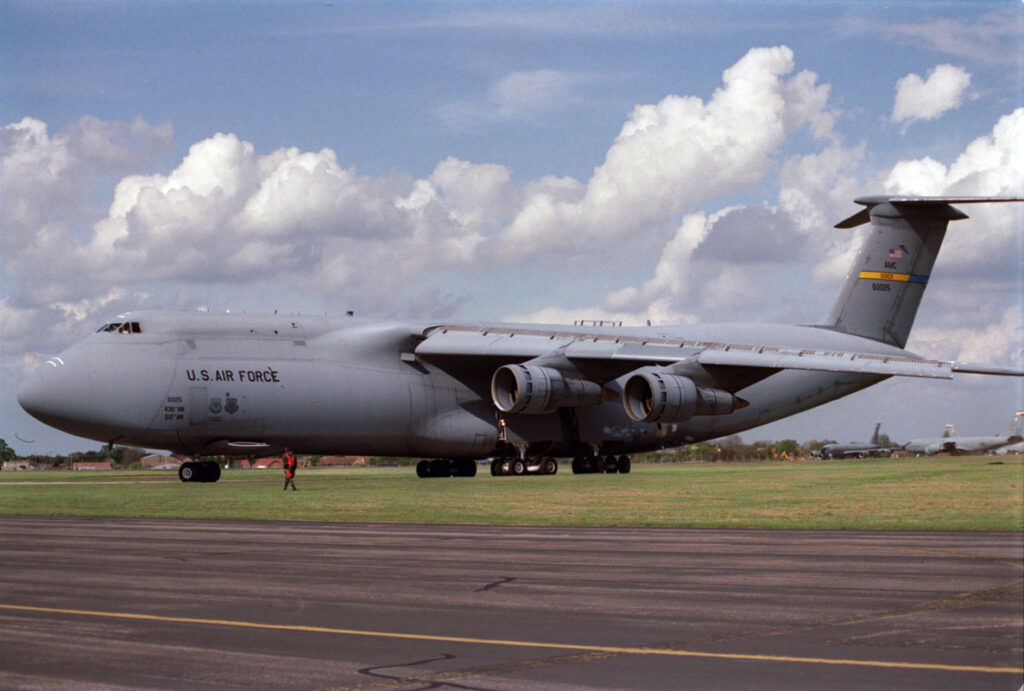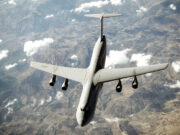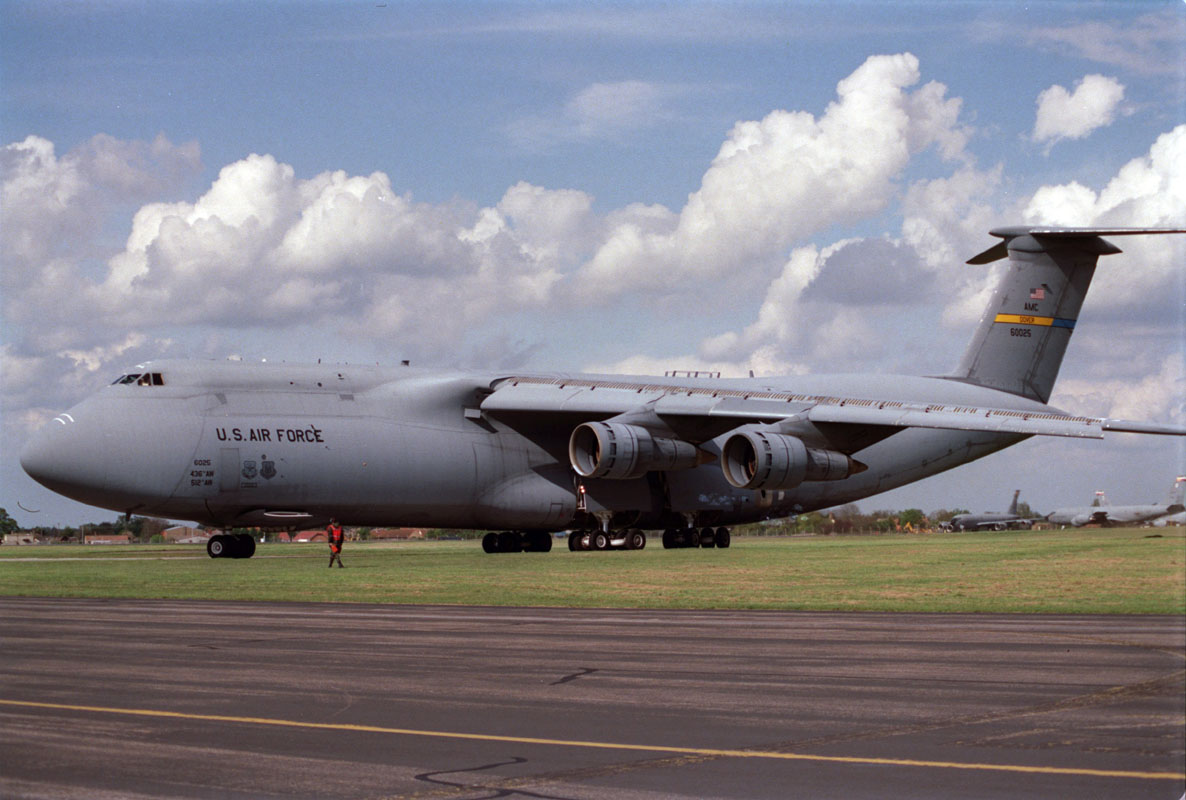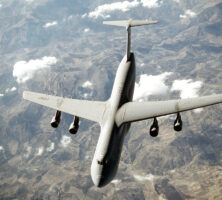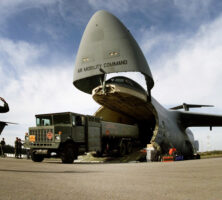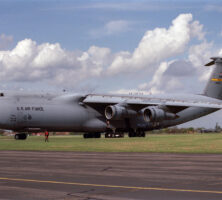The Lockheed-Georgia C-5 Galaxy can carry 135 tons of cargo, making it the largest production aircraft built in the United States and avital part of any military action in which large amounts of material need to be airlifted around the world. It has a wingspan of just under 223 feet (compared with just over 195 feet for Boeing 747-100s,-200s,-300s, and-400s; and with just over 225 feet for the Boeing 747-400XQLR) and is 247 feet long and 65 feet high. It has four engines; each engine pod is nearly 27 feet long and capable of producing 43,000 pounds of thrust. Until the release of the Soviet Antonov An-124 Condor in 1982, the C-5 was the largest and heaviest plane in operation.
The first C-5, built at Lockheed-Georgia (later Lockheed Martin) in Marietta, first flew in 1968. U.S. president Lyndon B. Johnson attended ceremonies as the first Galaxy C-5A model rolled off the assembly line on March 2 of that year. Delivery to the U.S. Air Force started in 1970 with the C-5A model and ended in March 1989 with the C-5B model. In 1998 dollars, each C-5A cost about $152.8 million, and each C-5B cost about $179 million.
At the turn of the century the U.S. Air Force Air Mobility Command had 126 C-5s in operation. The plane was designed for carrying large amounts of cargo and personnel. Its upper deck can carry ninety-six passengers and crew members. At both ends of the aircraft large doors can swing open to the cargo deck, and two rows of vehicles can drive on and off at the same time. This lower cargo deck can carry a wide range of cargoes, such as a seventy-four-ton folding mobile scissors bridge; or two M1-A1 Abrams main battle tanks; or seven UH-1 Huey helicopters; or 270 personnel (reserved for emergencies and special operations); or 135 tons of cargo.
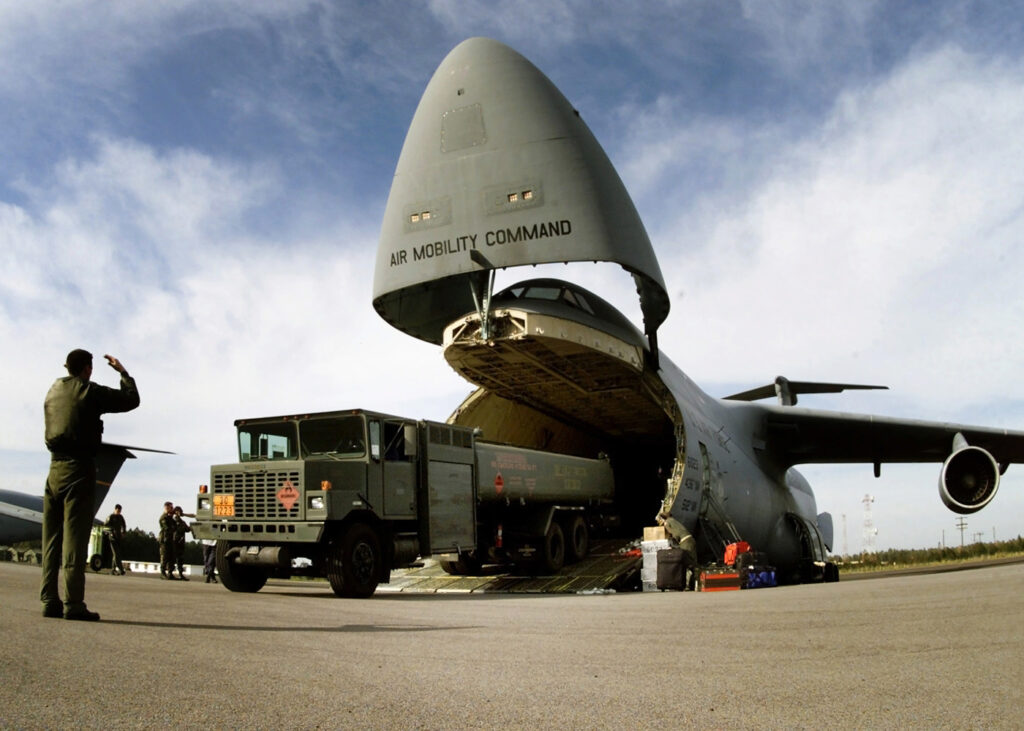
At takeoff its maximum weight is 840,000 pounds, including 270,000 pounds of cargo and 332,500 pounds of fuel; after being refueled in flight, C-5s have weighed 920,836 pounds. Twenty-eight wheels distribute this weight so that the aircraft doesn’t sink into the ground. Without in-air refueling it can fly 2,600 nautical miles at about 518 miles per hour. With refueling it can fly as long as crew fatigue allows; therefore the planes commonly carry relief crews, and six bunks are located near the cockpit for the off-duty crew to rest.
The airframe of a C-5 that has received structural upgrades will maintain its integrity for an estimated 50,000 flight hours before being retired—meaning that many of the planes now in service can keep flying until past 2060. Their engines and avionics (that is, the “aviation electronics” in the cockpit and autopilot), however, are not as reliable as the frame and are being modernized. In January 1999 the $454 million C-5 avionics modernization program (AMP) was awarded to Lockheed Martin at Marietta. This includes creating new cockpit displays (six laptop-sized LCD screens will replace the mechanical dials and tapes of the original cockpits), navigation systems, and autopilots. In December 2001 Lockheed Martin was also awarded a $1.1 billion contract for the system development and demonstration phase of the C-5 reliability enhancement and reengining program (RERP), which will develop the changes needed to retrofit C-5s with amore reliable and efficient engine that can provide more than 50,000 pounds of thrust.
